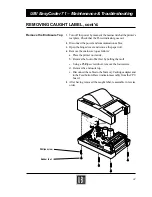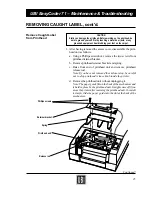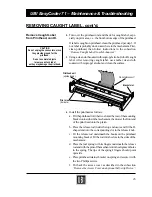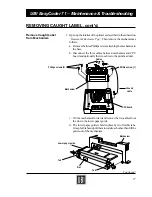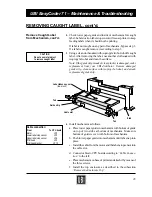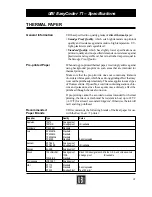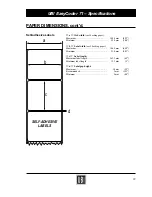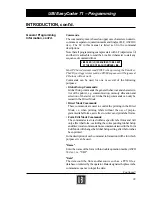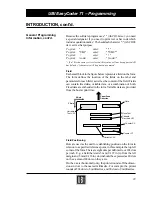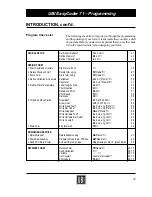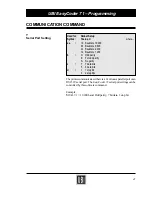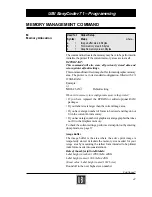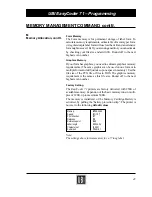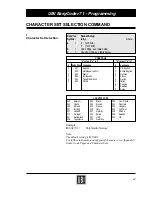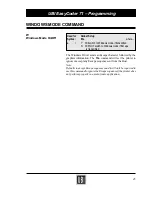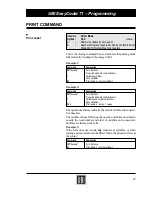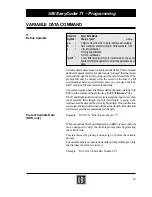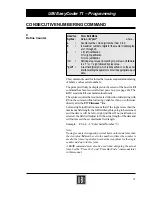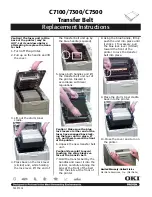
38
UBI EasyCoder 71 – Programming
General Programming
Information, cont'd.
Commands
The command syntax is based on upper case characters, numeric,
comma as a separator, quotation marks and line feed (LF; ASCII 10
dec.). The LF in this manual is listed as
↵
in the command
descriptions.
Note that all programming examples start with LF (depicted as
↵
)
and that it is advisable to send the Line Feed character to start any
sequence of command lines.
LINE FEED (LF) IS REQUIRED TO BE SENT
AT THE END OF EACH COMMAND LINE.
Most PC based systems send CR/LF when pressing the Enter key.
The CR (carriage return) sent in a CR/LF sequence will be ignored.
CR alone will not work.
Commands can be used for one or several of the following
purposes:
• Global Setup Commands:
Global Setup commands the general behaviour and characteris-
tics of the printer, e.g. communication, memory allocation and
selection of character set. Global Setup commands can only be
issued in the Direct Mode.
• Direct Mode Commands:
These commands are used to control the printing in the Direct
Mode, i.e. when printing labels without the use of prepro-
grammed label forms, as well as to retrieve and print label forms.
• Form Edit Mode Commands:
The commands are stored within a specific label form and will
only affect that form, overriding the corresponding Global Setup
and direct mode commands. Some commands issued in the Form
Edit Mode will change the Global Setup setting after the form has
been printed.
In the description of each command, information will be for which
purposes it can be used.
"Name"
Enter the name of the form within double quotation marks (ASCII
34 dec.), i.e. "UBI".
"Data"
The data could be from another source such as a PCX file, a
database, or entered by the operator. Data designates the place in the
command sequence to input the data.
INTRODUCTION, cont'd.
Continued!

